Each strain of HPV causes its own type of papillomas. They differ in appearance and place of appearance. You have low or high levels of oncogenes. Papilloma is a consequence of the HPV virus. Sometimes skin tumors appear in completely different places on the human skin with some common symptoms. They have a common name - papillomas. They differ from each other in shape, structure, location on the body, and degree of oncogenic danger. Depending on these factors, papillomas have their own special names. What are papillomas and why do they appear?
What are papillomas?
Papilloma is translated from Latin as "papilla-shaped tumor". These skin growths appear due to the HPV virus. Any papilloma is a benign tumor, however, depending on the strain (type) of the papillomavirus, it carries an oncogenic risk.
The variety of papillomas depending on the oncogenic risk:
- Low oncogenic risk.
- High oncogenic risk.
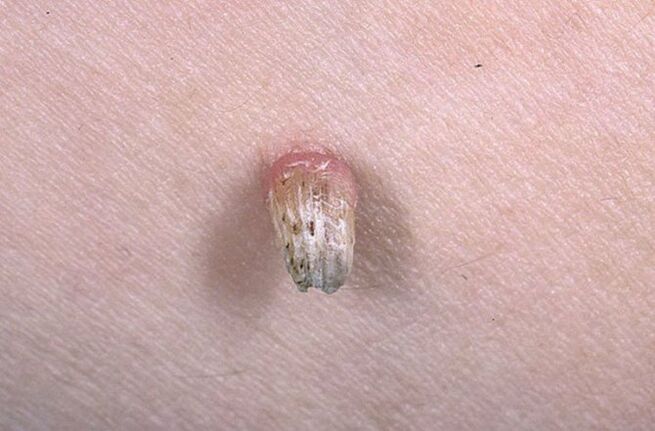
The second group includes strains - 82, 73, 68, 59, 58, 56, 52, 51, 45, 39, 35, 33, 31, 18, 16. The color of growths on the skin can be completely different. The color scheme of the papilloma can range from light to almost black. Sometimes an elongated papilloma grows on the body, other types of HPV are flat or, on the contrary, overgrown, resembling a cock's comb.
Only a doctor can determine the nature of the papillomavirus by performing the necessary diagnostics:
- visual examination of the patient;
- performing tests to identify the virus strain.
The virus enters the body under favorable conditions. You have to come into contact with a virus carrier or contaminated objects, and your immunity has to be weakened.
HPV is usually easily blocked by the immune system, there are several reasons why it fails:
- long-term medication;
- exacerbation of chronic diseases;
- drug use;
- excessive alcohol and cigarette consumption.
Any form of the disease requires timely treatment. Papillomas on the body have the unpleasant property of growing and sometimes turning into an oncological disease. A visit to the doctor is a necessary preventive measure.
Simple papillomas (vulgar)
This is the most common type of papilloma on the body. People call them warts, they appear gradually. First, a small bump grows on the skin. Its diameter gradually increases and its color changes from pale flesh to a more saturated brown. The structure of the vulgar papilloma also changes, it becomes hard, and keratinization appears.
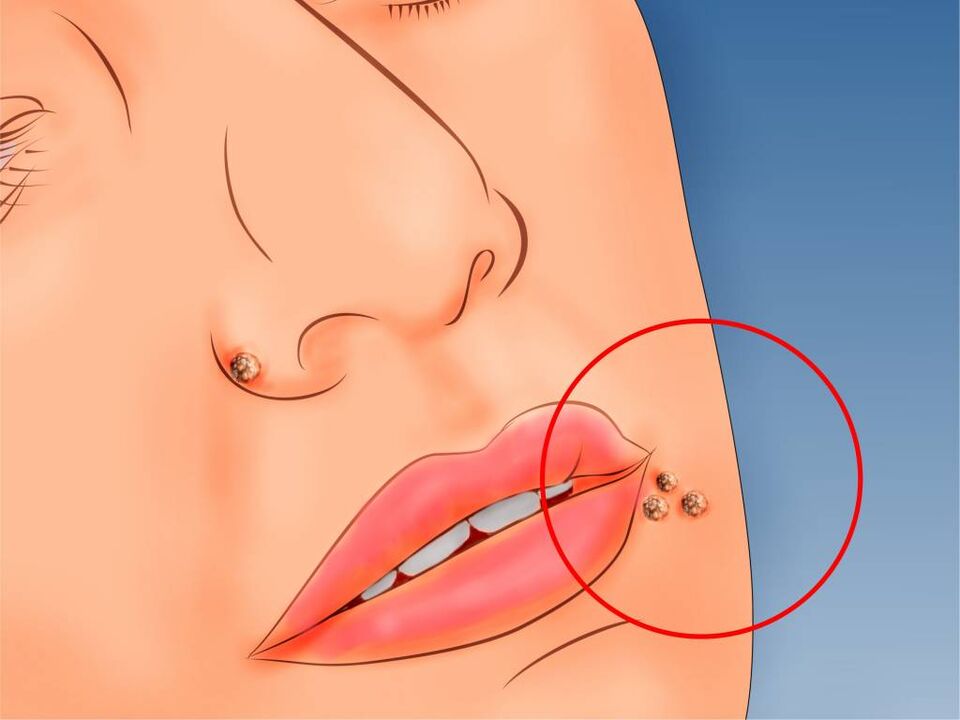
Vulgar papillomas are more often found:
- palm;
- fingers;
- skin between fingers
- knee;
- sometimes it forms on the face, back, neck
Such neoplasms can occur in groups. First, a "maternal papilloma" appears, after which a daughter growth develops.
Children and adolescents are particularly susceptible to this type of HPV. Vulgar papillomas are usually benign and do not degenerate into oncological formations. Strains 75-77, 26-29, 41, 38, 49, 57, 65 are responsible for the appearance of such tumors.
Simple types of viruses on the body include plantar warts. The name refers to the place of their appearance. The outgrowth on the sole grows one by one and can be identified by the characteristic protruding edge. It usually does not cause discomfort, but sometimes it can interfere with walking. In order not to confuse a corn wart with a plantar wart, remember that a corn has a smooth and even surface on which the skin pattern appears. Plantar warts are caused by strains 1-4.
Both of these and others can be easily removed in a doctor's office. But do not rush to the doctor, such growths may disappear on their own.
Flat papillomas
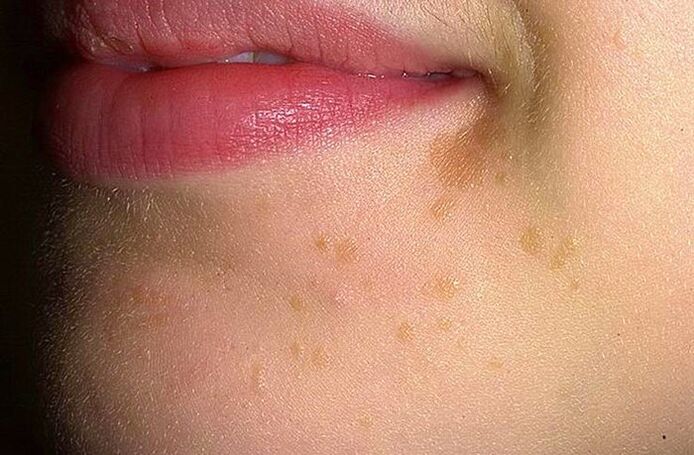
This growth is immediately different from other skin tumors.
It barely rises above the skin, if you look closely, you can see that its dense-looking surface consists of small nodules. A flat wart does not have a predetermined shape, it can have jagged edges or, on the contrary, rounded.
Flat papilloma does not have a keratinization process (death and keratinization of skin cells), therefore it does not have the skin furrows characteristic of other types of papillomas.
The color of such an accumulation is usually light, sometimes it darkens and turns brown. Flat papilloma cannot be dark brown.
Locations:

- leg;
- weapon;
- back;
- on the face they appear on the cheeks, around the eyes and on the chin.
Flat neoplasms are immediately noticeable to outsiders (if they are in the open). In addition to visual ugliness, they cause physical discomfort in the form of itching. When you try to scratch them, they start to "burn".
Such formations should be shown to the dermatologist. It is unlikely that you will prescribe the appropriate treatment for yourself. The doctor must examine, make a diagnosis and prescribe treatment, taking into account all the physical characteristics. Such growths are easier to eliminate immediately after they appear. Old growths must be removed using the operative method. Squamous papillomas are caused by virus types 49, 28, and 10.
Pointed papillomas (warts)
They have a characteristic appearance, which allows you not to confuse them with other types of papillomavirus. Outwardly, such a papilloma can be compared to "cauliflower" or "rooster comb". Condylomas adhere to the skin and grow on a short stalk. They are solitary and grow in large groups. Such a neoplasm of HPV can reach a large size in women.
The color of growths varies depending on where they appear. The condyloma can be white, fleshy, pale pink, and its color can range from light red to maroon. Sometimes such growths secrete a foul-smelling liquid.
Genital warts are often damaged due to their location.
The main localization of genital warts:
- Genitals.
- Anal area.
- Groin.
- Urethra.
- Vagina and cervix in women.
Such human papillomavirus is transmitted only sexually. Its development provokes the virus 69, 55, 54, 51, 44, 42, 6, 1
If left untreated, a pre-oncological condition may develop. The virus accumulates in tissues close to growth and changes the DNA composition of the epithelium and mucous membranes, which causes penile oncology in men and cervical cancer in women. Genital warts should be removed.
Filiform papillomas
They are also called acrochords. They mostly grow alone, but there are also groups of acrochords. If it accidentally breaks off, a new process appears again in its place, and the growth can migrate and grow in the body. They do not cause pain.
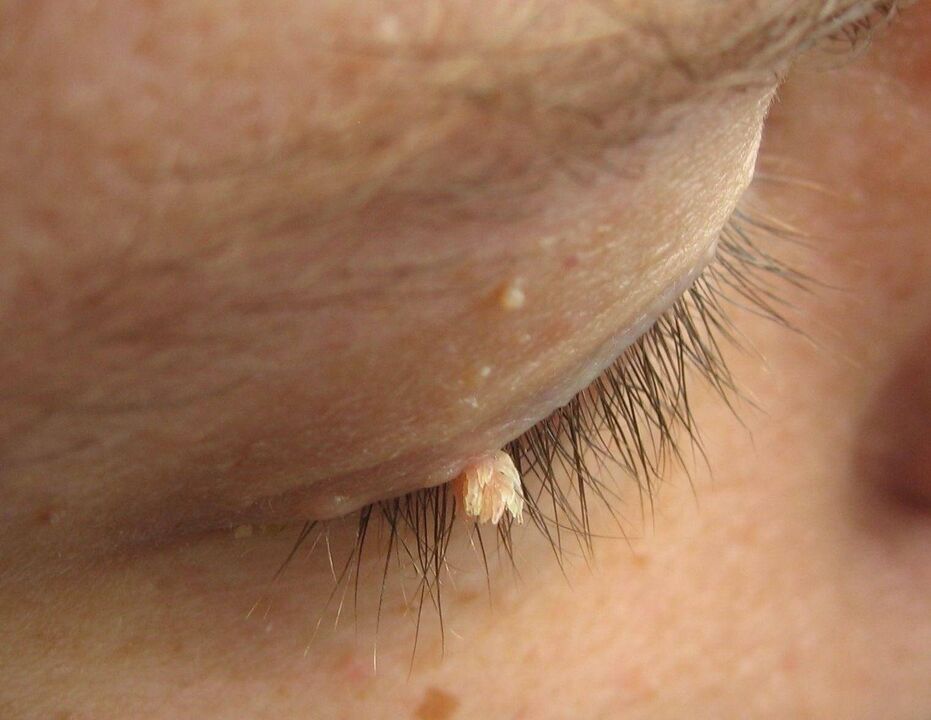
Accumulation is more aesthetic, especially if the papilloma has grown on the face. Color range from flesh tone to brown. The acrochord is elongated and flexible, sometimes with keratinized papillomas.
Favorite places of appearance of body parts with sensitive skin:
- face (eyelid area, nose);
- inguinal folds;
- on the neck;
- armpit;
- under the breast (in a woman).
If acrochord appears on the face, do not use scrubs and brushes to avoid injury. Outgrowths in the armpits are often damaged by razors.
It is better to see a doctor and remove the neoplasm in the clinic to avoid infection and degeneration of the disease into oncology. The latter rarely occurs with filiform papillomas.
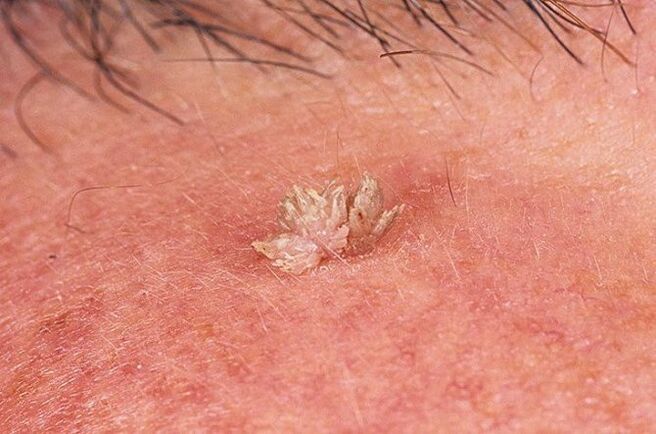
The viruses that cause this type of HPV are strains 2 and 7. Acrochords are more common in older people as the skin loses elasticity over time.
Sometimes the disease affects children and adolescents.
These are the most common forms of HPV. Based on information about virus types, you can independently make a preliminary diagnosis. A medical examination is required for a more accurate diagnosis.
In addition to these forms of HPV, other types of papillomas also occur. For example, papillomatosis of the larynx, choroidal papilloma (growing in the brain), papillomas in the stomach are called gastric papillitis. Internal papillomas are the most dangerous, sometimes the patient consults a doctor in an advanced stage of HPV. You can die from internal tumors. For example, the growth of the larynx interferes with the breathing process and can cause suffocation. Any HPV disease requires immediate medical attention.















































































